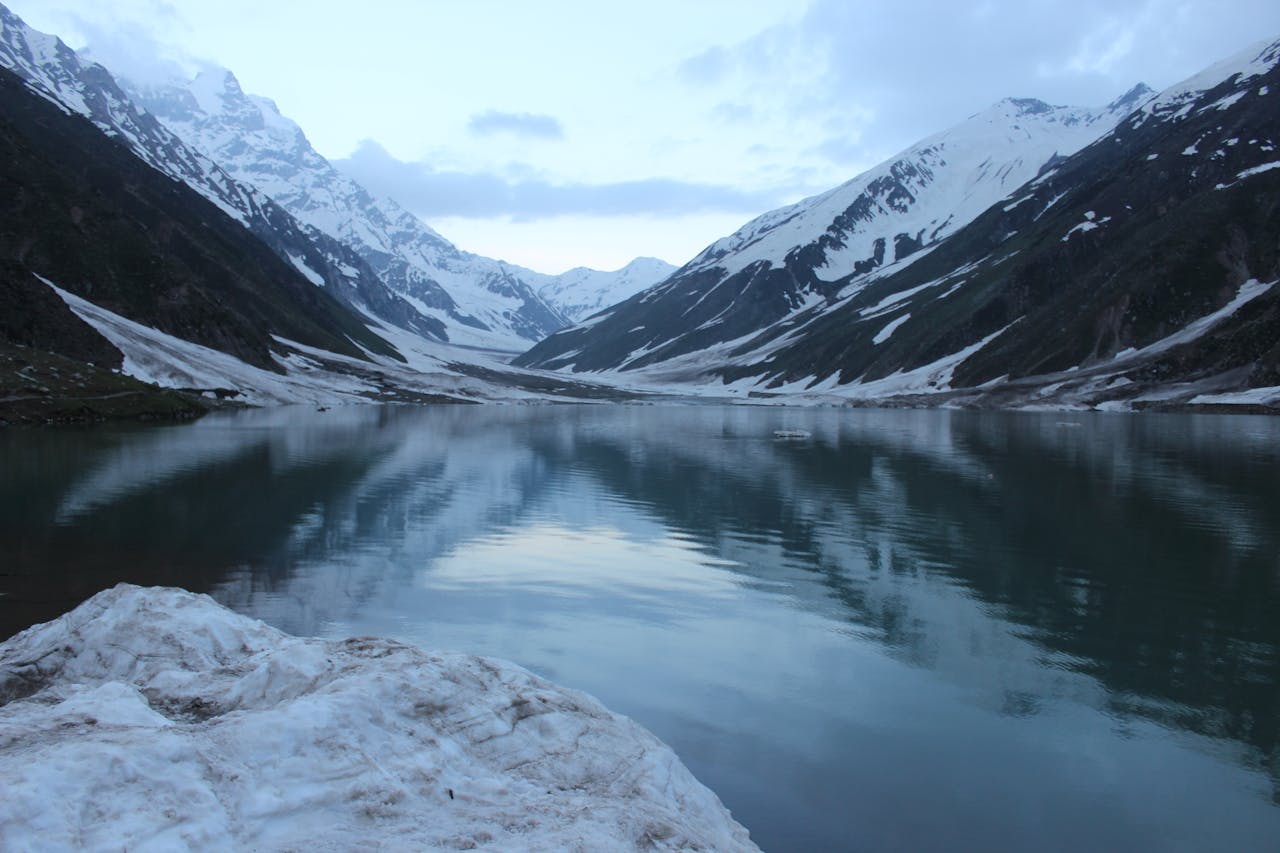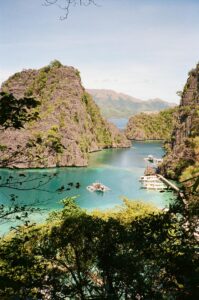Introduction
If you’re looking for the best places to visit in Pakistan northern areas, you’re in for a treat. These regions are a haven for eco-conscious travelers, offering stunning landscapes, from towering snow-capped peaks to lush valleys and pristine lakes. With a focus on sustainable tourism, northern Pakistan is the perfect place to connect with nature while preserving its beauty. Whether you’re trekking through majestic mountains or relaxing by serene lakes, these destinations offer something for every type of traveler. In this guide, we’ll dive into some of the top eco-tourism spots in Pakistan’s northern areas, where you can enjoy the region’s natural wonders while supporting responsible travel.
Table of Contents
Why Visit Pakistan’s Northern Areas?
The Essence of Eco-Tourism in Northern Pakistan
The northern regions of Pakistan have emerged as an eco-tourism hotspot, where sustainability, conservation, and minimal environmental impact take center stage. These areas are home to some of the most breathtaking landscapes, including lush valleys, majestic mountains, and crystal-clear lakes. Eco-conscious travelers will find ample opportunities for outdoor activities such as trekking, camping, bird watching, and wildlife spotting.
By supporting local businesses, eco-lodges, and organic farming initiatives, travelers help preserve the natural beauty of these regions and promote responsible tourism. The northern areas not only provide awe-inspiring views but also allow visitors to immerse themselves in local cultures, where the harmony between nature and people is celebrated.
1. Hunza Valley
Overview
Often referred to as “Heaven on Earth,” Hunza Valley in Gilgit-Baltistan is one of the most popular destinations for nature lovers and eco-tourists. Surrounded by the towering peaks of Rakaposhi and Ultar Sar, Hunza’s landscapes are characterized by lush green valleys, clear rivers, and snow-capped mountains.

Why Visit Hunza?
- Natural Beauty: From vibrant wildflowers in the spring to snowy peaks in the winter, Hunza offers a feast for the eyes throughout the year. The valley’s serene beauty makes it an ideal spot for photography and relaxation.
- Sustainable Agriculture: Hunza is renowned for its organic farming, with local farmers practicing sustainable methods that preserve the environment. Visitors can support eco-friendly agriculture and enjoy locally sourced produce.
- Cultural Richness: The people of Hunza are known for their hospitality and commitment to preserving their heritage. Visitors can explore ancient forts, including Baltit Fort and Altit Fort, which offer insights into Hunza’s fascinating history and cultural legacy.
Top Attractions in Hunza
- Baltit Fort: This UNESCO World Heritage site offers panoramic views of the valley. Its ancient architecture and rich history make it a must-visit for anyone traveling to Hunza.
- Passu Cones: The jagged, pointed peaks of Passu Cones are one of the most photographed landmarks in Pakistan, perfect for trekking and photography.
- Altit Fort: A centuries-old fort that provides a glimpse into Hunza’s past while offering incredible views of the surrounding landscapes.
2. Swat Valley
Overview
Often called the “Switzerland of Pakistan,” Swat Valley in Khyber Pakhtunkhwa is a captivating blend of lush meadows, clear rivers, and towering mountains. Historically, Swat was a Buddhist center of learning, and the region still holds traces of its ancient past.

Why Visit Swat?
- Diverse Landscapes: Swat features a variety of landscapes, from alpine meadows and scenic lakes to dense forests and towering mountains. Nature lovers will find plenty to explore in this tranquil valley.
- Adventure Activities: Swat is an adventure seeker’s paradise, with options for trekking, fishing, rafting, and even skiing at Malam Jabba. The valley offers thrilling outdoor experiences while minimizing the environmental impact through eco-friendly practices.
- Historical Significance: Swat’s Buddhist heritage adds a rich cultural layer to its natural beauty. Visitors can explore ancient Buddhist ruins and temples that offer a glimpse into the region’s past.
Top Attractions in Swat
- Malam Jabba: Known for its ski resort, Malam Jabba is a fantastic destination for winter sports enthusiasts and eco-tourists looking for a unique experience.
- Fizagat Park: This serene park near Mingora offers peaceful walks along the Swat River and a tranquil atmosphere for relaxation.
- Ushu Forest: A lush forest located in upper Swat, Ushu Forest is a perfect destination for eco-friendly trekking, offering a peaceful escape from the crowds.
3. Naran Kaghan Valley
Overview
The Naran Kaghan Valley, located in the Mansehra district of Khyber Pakhtunkhwa, is famous for its pristine lakes, stunning mountain peaks, and tranquil meadows. The valleys provide a perfect getaway for eco-conscious travelers who want to connect with nature.

Why Visit Naran Kaghan?
- Stunning Lakes and Meadows: The valleys are home to some of the most beautiful lakes in Pakistan, such as Saif-ul-Malook and Lulusar Lake, offering visitors the chance to relax in serene, untouched landscapes.
- Eco-Friendly Accommodation: The region has several eco-lodges and campsites that cater to travelers seeking responsible lodging options in the heart of nature.
- Wildlife and Nature: Naran Kaghan is home to diverse wildlife, including the elusive snow leopard. The area’s untouched beauty provides a sanctuary for wildlife and nature lovers alike.
Top Attractions in Naran Kaghan
- Saif-ul-Malook Lake: A stunning glacial lake, Saif-ul-Malook is surrounded by snow-capped peaks, making it a popular spot for trekking, boating, and photography.
- Lulusar Lake: Known for its crystal-clear waters and peaceful environment, Lulusar Lake is a must-visit destination for eco-tourism enthusiasts.
- Babusar Top: As the highest point in the Kaghan Valley, Babusar Top offers breathtaking views of the surrounding mountains and valleys.
4. Gilgit-Baltistan
Overview
Gilgit-Baltistan, often referred to as the “crown jewel” of northern Pakistan, is renowned for its majestic mountains, remote valleys, and tranquil lakes. Home to some of the world’s highest peaks, including K2, this region offers unparalleled opportunities for adventure tourism and eco-friendly travel.

Why Visit Gilgit-Baltistan?
- Mountain Expeditions: The region offers some of the world’s best trekking and mountaineering opportunities. The Karakoram Highway, one of the highest paved roads in the world, runs through this awe-inspiring region, providing spectacular views of some of the highest mountains on Earth.
- Cultural Diversity: Home to a mix of ethnic groups, including Hunzakuts and Balti, Gilgit-Baltistan offers rich cultural experiences that allow travelers to connect with local communities.
- Eco-Friendly Travel: Gilgit-Baltistan promotes sustainable tourism, with eco-lodges, wildlife viewing, and responsible trekking options that minimize environmental impact.
Top Attractions in Gilgit-Baltistan
- Fairy Meadows: Located at the foot of Nanga Parbat, Fairy Meadows is a peaceful campsite that offers stunning views of the surrounding mountains. It’s an ideal location for eco-tourists looking to connect with nature.
- Deosai National Park: Known as the “Land of Giants,” Deosai is a vast plateau with breathtaking landscapes and abundant wildlife. It’s perfect for trekkers and nature lovers alike.
- K2 Base Camp Trek: For adventure enthusiasts, the K2 Base Camp trek offers unparalleled views of K2, the second-highest peak in the world. It’s one of the most challenging and rewarding hikes globally.
5. Skardu Valley
Overview
Located in Gilgit-Baltistan, Skardu Valley is the gateway to K2 and the heart of the Karakoram Range. Surrounded by towering peaks and crystal-clear lakes, Skardu offers a unique mix of adventure and tranquility, making it an ideal destination for eco-tourism.

Why Visit Skardu?
- Natural Wonders: Skardu is home to some of the most awe-inspiring landscapes, including Satpara Lake, Sheosar Lake, and vast desert plains, offering eco-tourists an unparalleled connection with nature.
- Adventure Tourism: Whether it’s trekking, hiking, or rock climbing, Skardu provides ample opportunities for adventure lovers to explore the rugged terrain of the Karakoram Range.
- Sustainable Tourism: The region promotes eco-friendly accommodations and responsible travel practices, making it a perfect destination for those looking to experience nature while minimizing their impact.
Top Attractions in Skardu
- Shangrila Resort: Known as “Heaven on Earth,” the Shangrila Resort offers eco-friendly accommodations with stunning views of Skardu Valley.
- Satpara Lake: A tranquil lake surrounded by snow-capped peaks, Satpara Lake is ideal for boating and relaxation in a peaceful environment.
- Sheosar Lake: Located in Deosai National Park, Sheosar Lake is one of the most pristine lakes in the region, perfect for eco-tourism enthusiasts.
6. Khunjerab Pass
Overview
Situated at an elevation of 4,714 meters, Khunjerab Pass is the highest paved border crossing in the world. Located at the border between Pakistan and China, this pass offers spectacular views of the Karakoram Range and serves as a gateway to the Khunjerab National Park.

Why Visit Khunjerab Pass?
- Spectacular Views: The pass offers incredible views of the surrounding Karakoram mountains and is a great place to enjoy the beauty of nature.
- Wildlife: The region is home to rare species such as the Marco Polo sheep and snow leopards, making it a prime destination for wildlife enthusiasts.
- Eco-Friendly Travel: Travelers can enjoy the pristine beauty of Khunjerab Pass while minimizing their environmental footprint.
Top Attractions Near Khunjerab Pass
- Khunjerab National Park: A protected area that provides a sanctuary for local wildlife, this national park is perfect for nature lovers interested in observing diverse species in their natural habitat.
- Karakoram Highway: The Karakoram Highway, the highest paved road in the world, runs through Khunjerab Pass and offers travelers a scenic journey through one of the most dramatic landscapes on Earth.
Conclusion: Discover the Magic of Pakistan’s Northern Areas Through Responsible Travel
Pakistan’s northern regions are a hidden paradise, offering breathtaking landscapes, rich cultural heritage, and endless eco-tourism opportunities. Whether you’re trekking through the majestic mountains of Hunza, cruising on the peaceful lakes of Naran Kaghan, or soaking in the tranquil beauty of Skardu’s valleys, each destination provides a unique experience that blends adventure, culture, and nature.
By supporting eco-friendly travel practices, you not only enjoy these stunning places but also help preserve their natural beauty for future generations. Northern Pakistan offers an exceptional opportunity to experience the best of eco-tourism. So, pack your bags, choose responsible travel, and set out on an unforgettable journey through the magical northern areas of Pakistan.
FAQ
Question1. What is eco-tourism in Pakistan’s northern areas?
Answer. Eco-tourism focuses on responsible travel that preserves nature and supports local communities, ensuring the protection of northern Pakistan’s pristine landscapes and heritage.
Question2. Are there eco-friendly accommodations in northern Pakistan?
Answer. Yes, eco-lodges and homestays in northern Pakistan offer sustainable practices like renewable energy and organic food, providing a responsible travel experience.
Question3. Is it safe to visit Pakistan’s northern areas?
Answer. Yes, the northern areas are generally safe for travelers, provided you follow local guidelines and respect cultural norms for a secure experience.




